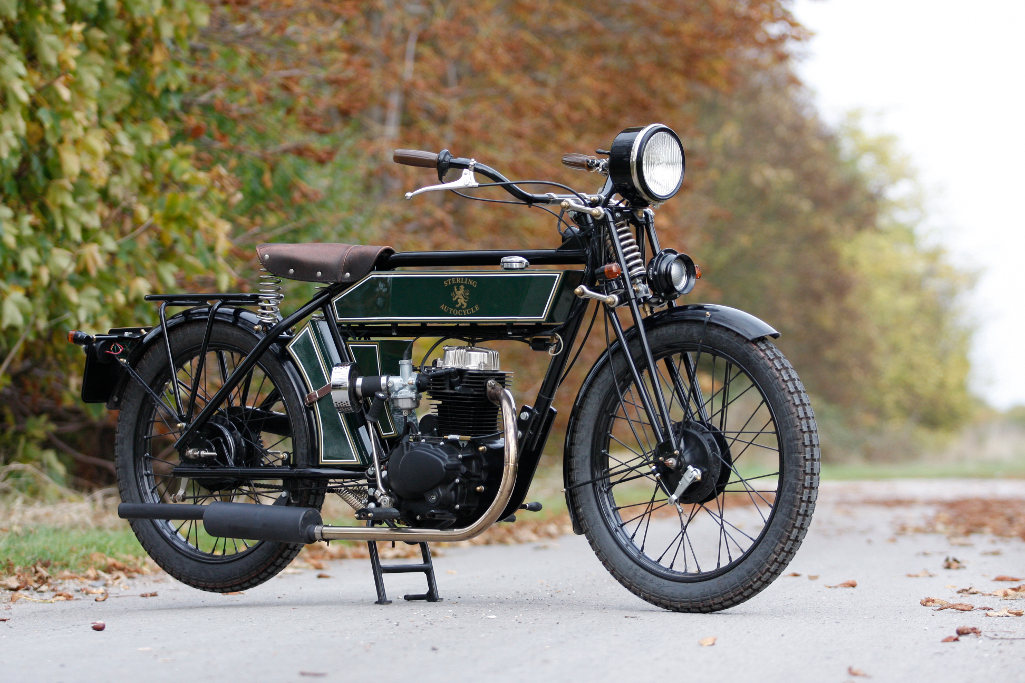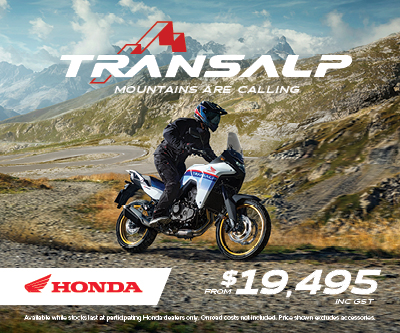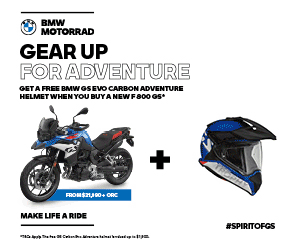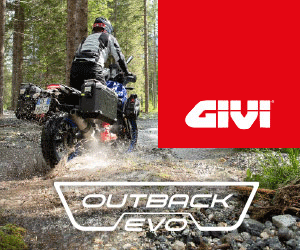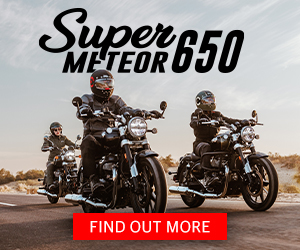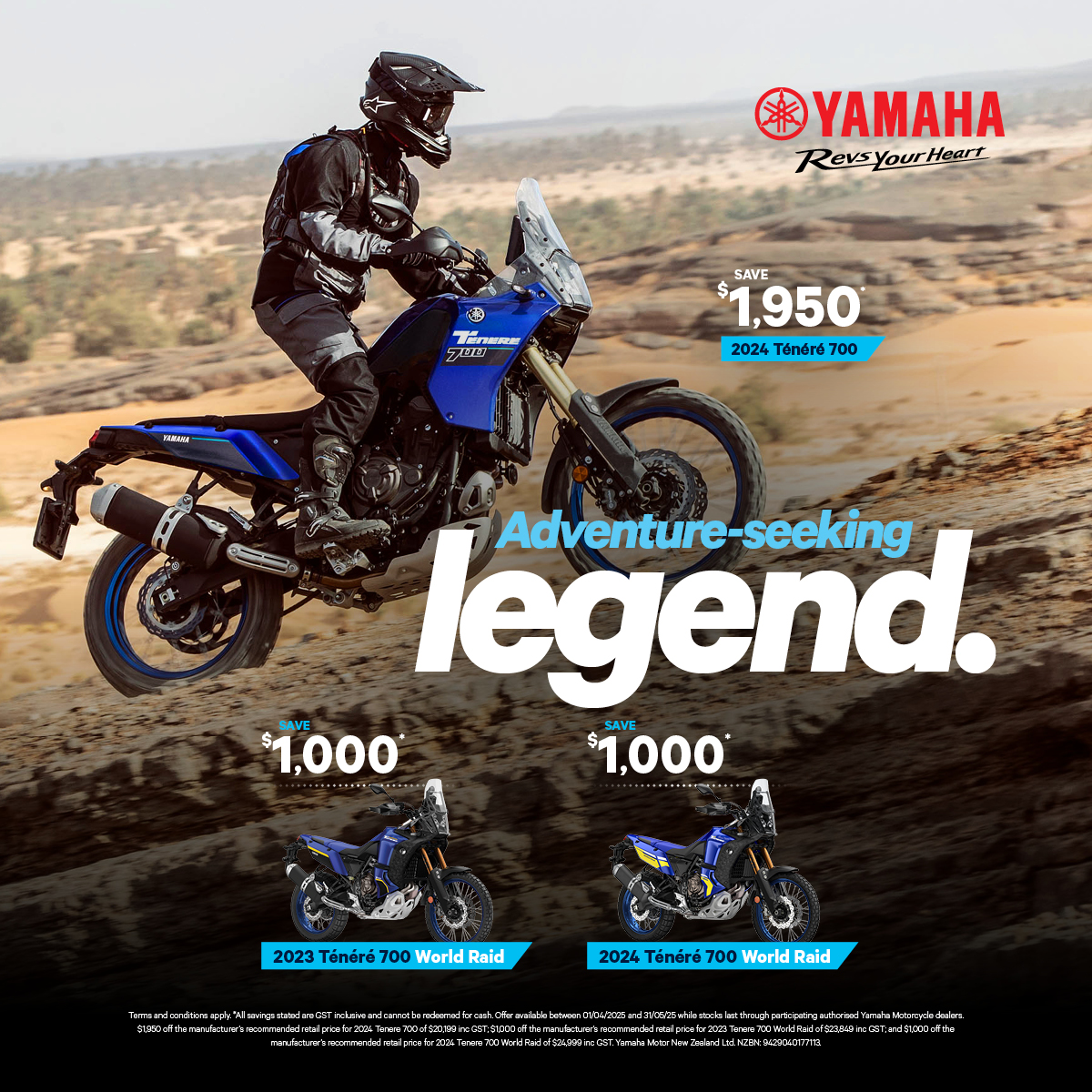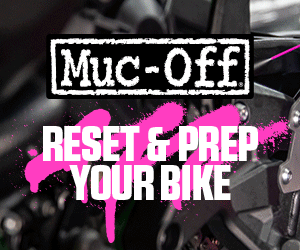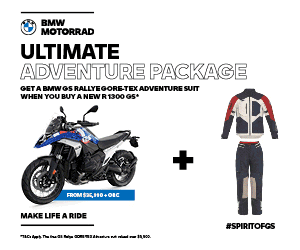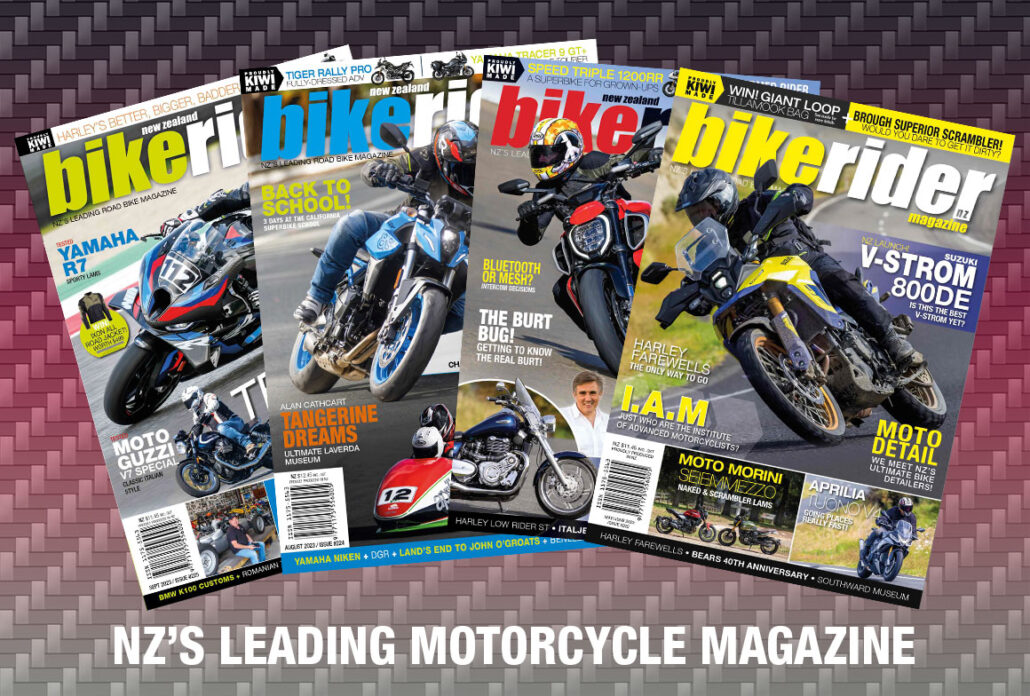It may look like something from the turn of the 20th century, but the Black Douglas Sterling is anything but a fragile antique, as it is in fact the debut model of Milan based Black Douglas Motorcycles…
Words: Roland Brown | Photos: Adam Bolton
Riding the Black Douglas Sterling through Cambridge is a unique and highly entertaining experience – and not quite what it seems. I’m sitting bolt upright, gripping a broad, pulled-back handlebar, and looking across an enormous, vintage style headlight and a long, narrow, flat-sided fuel tank with a steel frame tube running along its top.
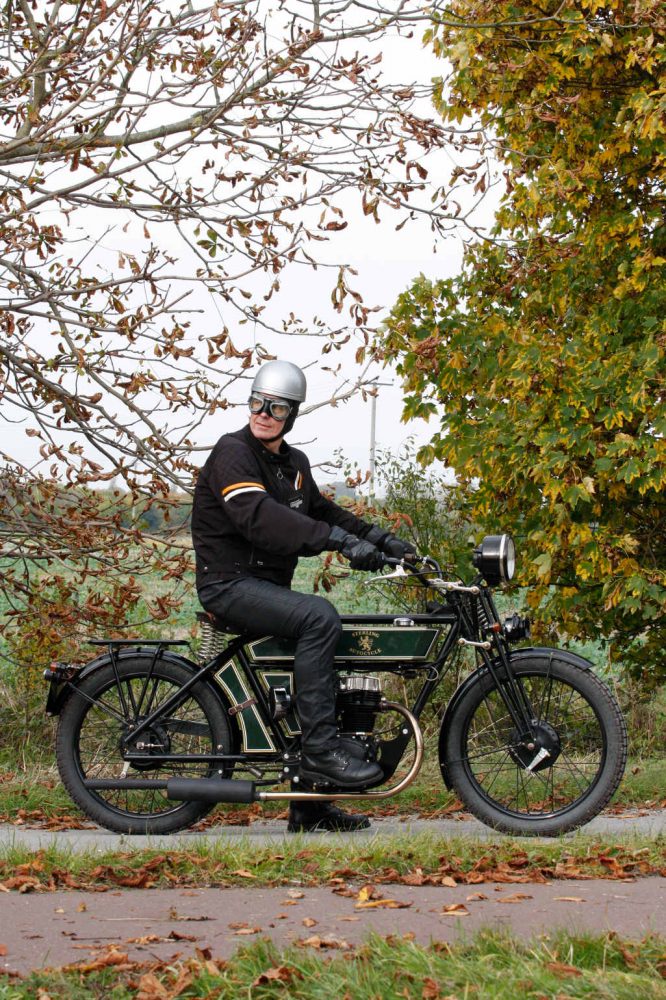
As the rigid-framed Black Douglas cruises down a tree-lined road in the English city, I’m bouncing gently in its bicycle style saddle, enjoying the gentle performance of its single-cylinder engine and the low chuffing sound of its exhaust pipe. The Sterling cuts through the traffic, frequently triggering smiles from pedestrians, cyclists and even car drivers as they catch sight of it.
Many of the sensations are familiar from when I rode a 1920s Douglas, some years ago, but this bike is distinctly different. That old Douglas required a run-and-bump to start it, and had a hand gearchange and no clutch. By contrast, the Black Douglas started on the button, has a light clutch and a sweet-shifting five-speed gearbox, and is as easy to ride as just about any other modern commuter bike.
That’s because the Sterling is not some century-old vintage machine, but the debut model from The Black Douglas Motorcycles company of Italy. Several similar bikes have been produced this year, at the firm’s base near Milan. Far from being a fragile piece of history best appreciated by elderly enthusiasts, the Sterling is a brand new motorcycle that combines its vintage look with rider-friendly simplicity of use.
That said, the Sterling’s make-up is far from straightforward. The Black Douglas company is owned by bike-crazy Italian entrepreneur Fabio Cardoni. But the Sterling was designed in the UK by Birmingham based custom builder Benny Thomas, best known for his Harley-Davidson engined Boneshaker choppers. And it is powered by a 230cc, single-cylinder engine from Zongshen of China, essentially a copy of Honda’s CG230 unit.
THE BEGINNINGS OF BLACK DOUGLAS
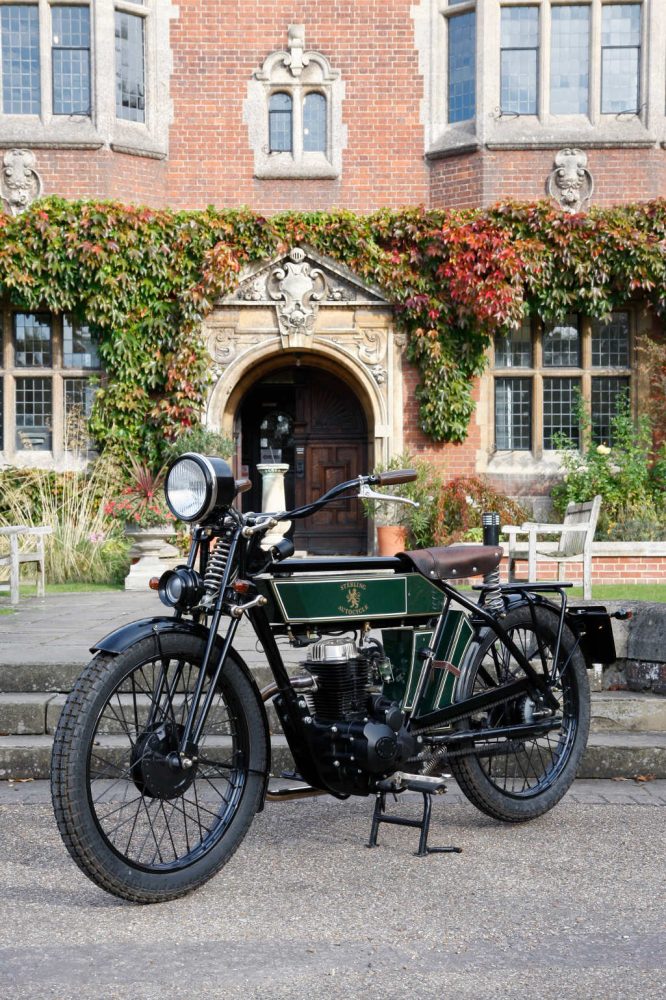 This multi-national creation came about after Cardoni, a successful businessman who owns a large motorcycle collection, realised that he was no longer enjoying riding his fast bikes as much as he used to. Having previously commissioned a couple of Harley-engined custom bikes from Boneshaker, he asked boss-man, Benny, to come up with some simpler machines that looked good and were fun at slow speed.
This multi-national creation came about after Cardoni, a successful businessman who owns a large motorcycle collection, realised that he was no longer enjoying riding his fast bikes as much as he used to. Having previously commissioned a couple of Harley-engined custom bikes from Boneshaker, he asked boss-man, Benny, to come up with some simpler machines that looked good and were fun at slow speed.
Thomas, who already had experience with small-capacity Chinese bikes, produced three machines, of which the vintage, flat-tank styled Sterling was Cardoni’s favourite. And when the new owner started riding it on his home streets of northern Italy, he found that he not only enjoyed the experience, but attracted so much positive attention that he had the idea of putting a similar machine into small-scale production.
Thus was formed the Black Douglas Motorcycle company, named after one of history enthusiast Cardoni’s heroes: James Douglas, a 14th century Scottish knight who fought the English in Scotland’s Wars of Independence, and was nicknamed the Black Douglas.
“He was a hero who fought for the little people,” says Cardoni, who sees a parallel with his firm’s attack on the commuter-bike world dominated by Honda and Piaggio.
MORE THAN THE SUM OF ITS PARTS
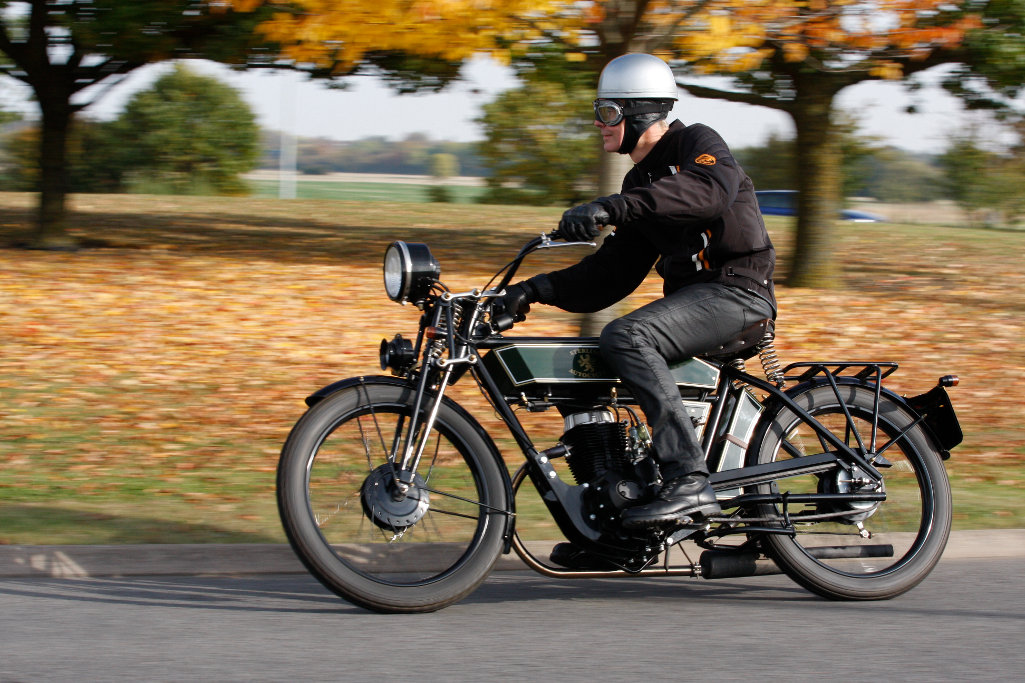 Honda’s engineers would doubtless be fascinated to see the CG engine they designed bolted into the Sterling ’s steel frame, whose top tube runs across the top of the flat-sided, nine-litre aluminium fuel tank. The aircooled, pushrod-operated engine breathes in through a Keihin-replica Keima carburettor, out through a fully catalysed stainless steel exhaust, and produces a claimed maximum of 14bhp at 6000rpm.
Honda’s engineers would doubtless be fascinated to see the CG engine they designed bolted into the Sterling ’s steel frame, whose top tube runs across the top of the flat-sided, nine-litre aluminium fuel tank. The aircooled, pushrod-operated engine breathes in through a Keihin-replica Keima carburettor, out through a fully catalysed stainless steel exhaust, and produces a claimed maximum of 14bhp at 6000rpm.
The frame is a hard tail, relying for suspension on a pair of springs under the bicycle-style leather saddle. A matching sprung leather pillion pad can be added if desired, on top of the test bike’s simple rack. The front suspension is by a traditional girder design, featuring milled-from-solid aluminium legs and a single, centrally placed Alcotech shock unit, which is adjustable for preload and rebound damping.
That sits below a large Bosch headlight, behind a matching smaller horn. The wheels are wire spoked and a huge 21 inches in diameter, with generous mudguards; brakes are single-leading-shoe drums at each end. The whole bike maintains the vintage look, backed up by painstaking detailing, including the dark green, neatly pinstriped tank and sidepanels. The prototype is in very good condition despite being a well-used development bike that Cardoni rode for most of a 1700km trip from Milan to Birmingham.
Almost everything is metal, the small amount of plastic in the wiring carefully concealed. The control levers and other parts are plated in nickel, rather than chrome, for a period finish, while cables are wrapped in cotton canvas tape. The indicators are small enough to be unobtrusive; and operated by minimalist switchgear that includes, next to the right handlebar’s brown twistgrip, a starter button.
DECEITFUL DIAMENTIONS
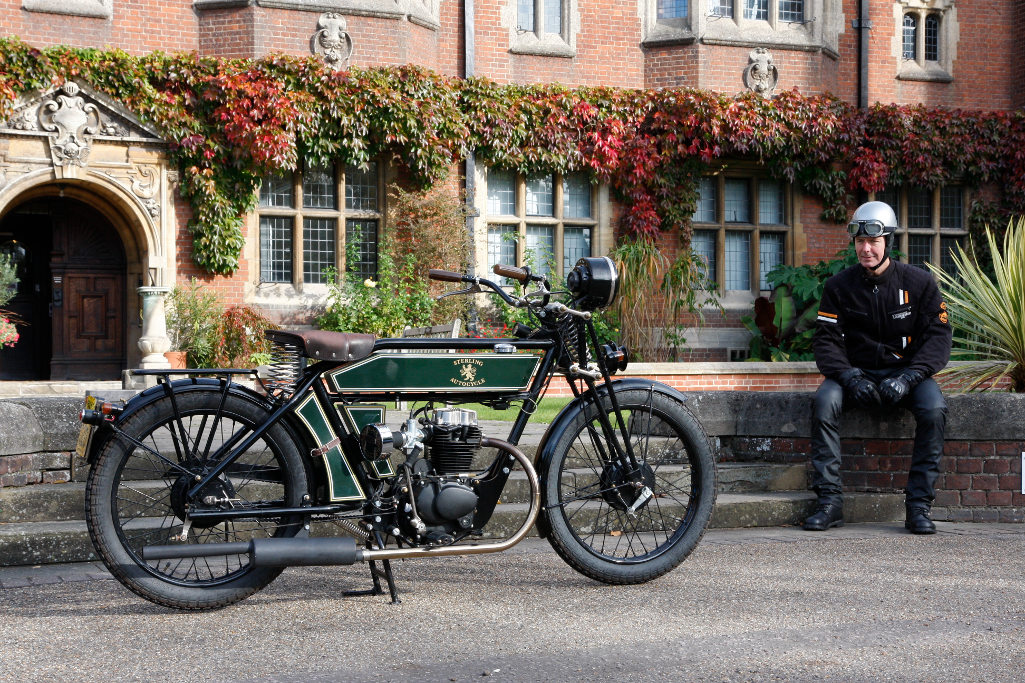 My first impression, on seeing the Sterling in the metal, was surprise at how big it is. The handlebar is tall and wide; the wheel diameter enormous; the 1500mm wheelbase longer than that of most superbikes. Even the saddle is quite high, at 830mm, contributing to a very roomy and relaxed riding position. But at just under 100kg without fuel the Black Douglas is as light as it’s slim, and immediately felt effortlessly manageable.
My first impression, on seeing the Sterling in the metal, was surprise at how big it is. The handlebar is tall and wide; the wheel diameter enormous; the 1500mm wheelbase longer than that of most superbikes. Even the saddle is quite high, at 830mm, contributing to a very roomy and relaxed riding position. But at just under 100kg without fuel the Black Douglas is as light as it’s slim, and immediately felt effortlessly manageable.
That feeling remained after I’d turned the ignition switch in the left sidepanel, fired up the engine on the button, selected first gear with a prod of my left boot, and let out the light-action clutch to pull away. For all its century-old appearance, the Sterling was as easy to ride as any modern lightweight. It accelerated away effortlessly, fuelling sweetly, the only negative an occasional bit of low-speed snatching from the long drive chain.
THE GO FACTOR
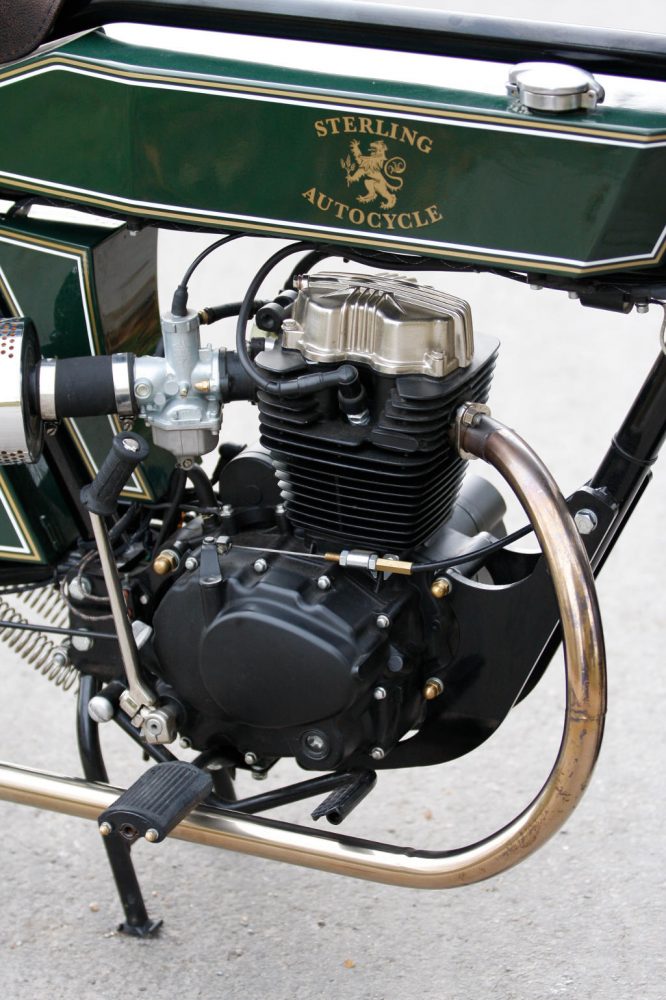 Anyone looking for arm-stretching performance won’t find it here. But on a mild autumn day, the Sterling was well up to the task of cutting through Cambridge, before heading west onto some more open roads. In the city, it was far more agile than I’d expected, the generous steering lock helping negotiate bunged-up traffic, and the sweet five-speed box and heel-and-toe gearlever helping give decent acceleration away from the lights.
Anyone looking for arm-stretching performance won’t find it here. But on a mild autumn day, the Sterling was well up to the task of cutting through Cambridge, before heading west onto some more open roads. In the city, it was far more agile than I’d expected, the generous steering lock helping negotiate bunged-up traffic, and the sweet five-speed box and heel-and-toe gearlever helping give decent acceleration away from the lights.
On faster roads it was sufficiently powerful to be entertaining, getting to about 100km/h reasonably quickly, and eventually putting 113km/h on the small, round-faced speedometer, designed to resemble an oil pressure dial and located down by my left knee. There was a bit of vibration at higher revs, but nothing to worry about unless you were planning a lengthy main-road trip.
The performance of the chassis was very acceptable, combining stability at speed with effortless steering, thanks to the bike’s light weight and the leverage from its wide handlebar. But with no rear suspension, and narrow Ensign Universal tyres of uncertain grip, I wasn’t getting too carried away in the bends.
The girder front end tended to crunch over bumps, which is not surprisingly given the modest amount of wheel travel provided by the shock. But the rigid rear end gave a respectably comfortable ride thanks to the sprung saddle, which bounced up and down on its undamped springs in a way that was slightly disconcerting in bends until I got used to it.
Braking was adequate for such a light bike, the diminutive 170mm drum coping okay at low speed, but requiring the assistance of the more powerful 180mm rear drum to slow in anything resembling a hurry. Black Douglas have uprated the front stopper since the prototype; the production Sterling being collected by its owner on the day I called had a different drum with actuating arm on the opposite side.
That is just one of numerous tweaks and updates that Cardoni has been working on, including the adoption of fuel-injection and ABS-equipped disc brakes that will be required to pass Euro 4 regulations next year, and will allow exports to more markets, including north America. He is also working on an electric Sterling, plus a more powerful model, the Sterling Imperial, whose 350cc engine has been designed and will be produced in Italy.
Meanwhile, this debut model, the Sterling, is in small-scale production, in a number of variants including this green-finished Original Drayton, the base model which costs €10,000 (NZD15,300). And variants in other colours, with names like Silent Grey and Claret Classic, are a similar price. There are also more expensive models such as the Sport Imperial and Countryman Deluxe, kitted out with accessories including canvas saddlebags, wicker basket and umbrella holder.
Even the Original Drayton is pricey for a Chinese-engined 230cc commuter machine, but if ever a motorcycle delivered more than its bare specification sheet suggests, it’s the Black Douglas Sterling. This imaginatively conceived, superbly executed and gloriously eccentric machine is impossible to ride without smiling, and without making other people smile too.
If that’s not a good enough reason to ride a motorbike, I’m not sure what is.
BLACK DOUGLAS STERLING
| Price: | €10,000 |
| Engine type: | Air-cooled single cylinder |
| Displacement: | 229cc |
| Bore and Stroke: | 67 x 65mm |
| Compression ratio: | 11.2:1 |
| Carburation: | Keima carburettor |
| Maximum Power: | 14bhp (10.5Kw) @6000rpm |
| Maximum torque: | 18.3Nm @4500rpm |
| Clutch: | wet multiplate |
| Transmission: | 5-Speed gearbox |
| Front Suspension: | Girder, single Alcotech shock |
| Rear suspension: | None |
| Front brake: | 170mm single-leading-shoe drum |
| Rear brake: | 180mm single-leading-shoe drum |
| Front tyre: | 2.75 x 21in Ensign Universal |
| Rear tyre: | 3.00 x 21in Ensign Universal |
| Length: | 2180mm |
| Wheelbase: | 1500mm |
| Seat height: | 830mm |
| Fuel capacity: | 9L |
| Wet Weight: | 98kg |

